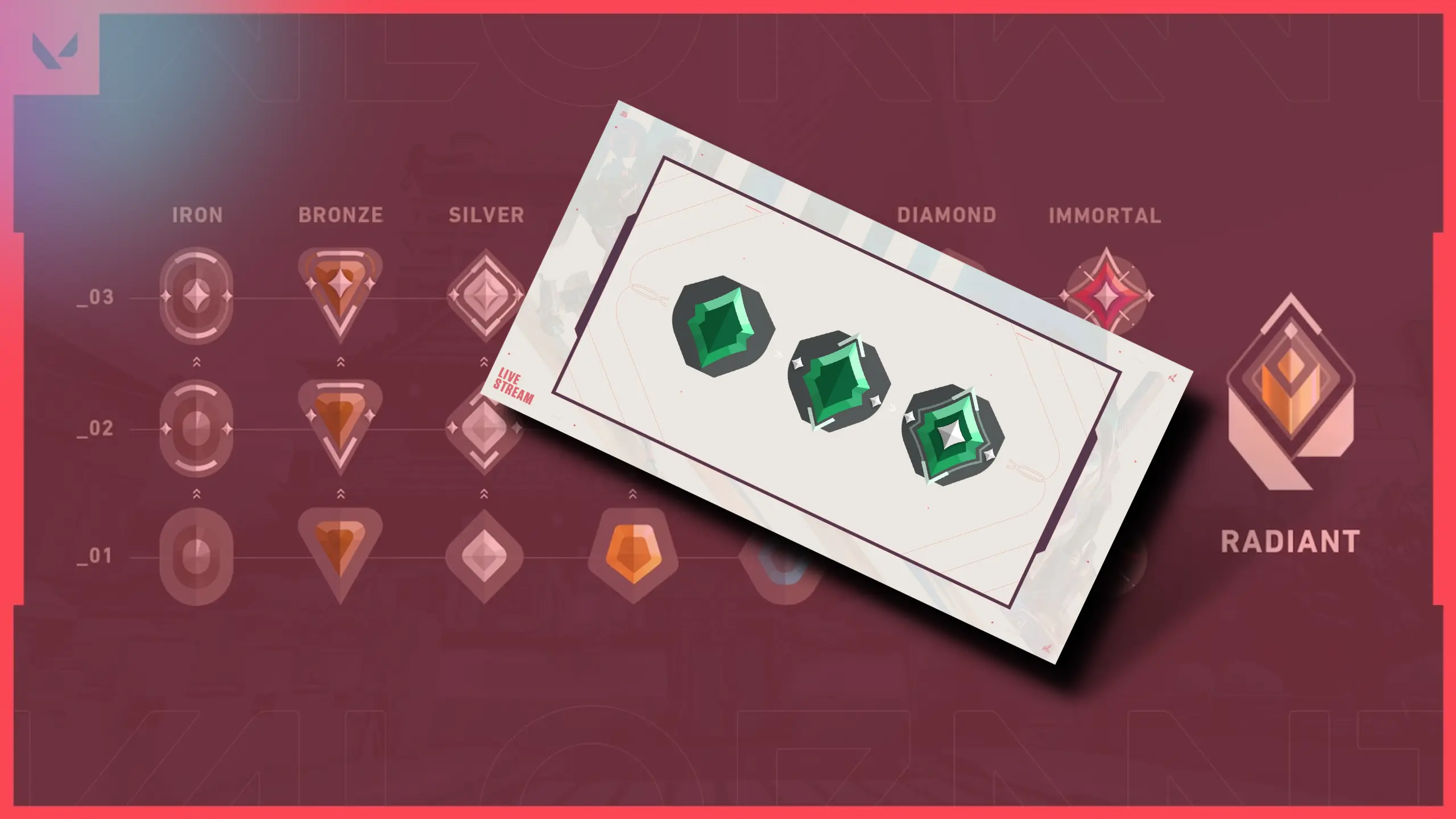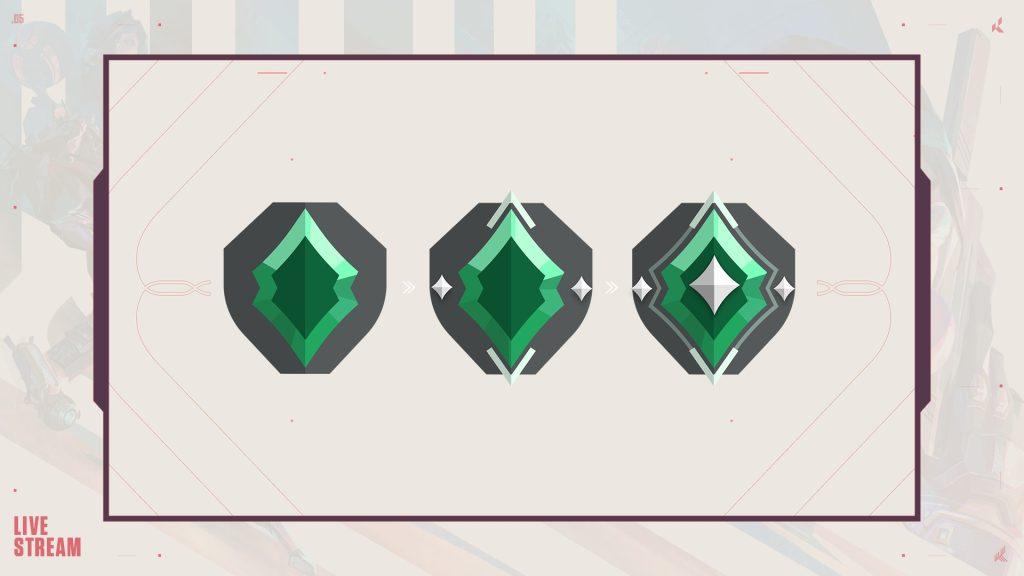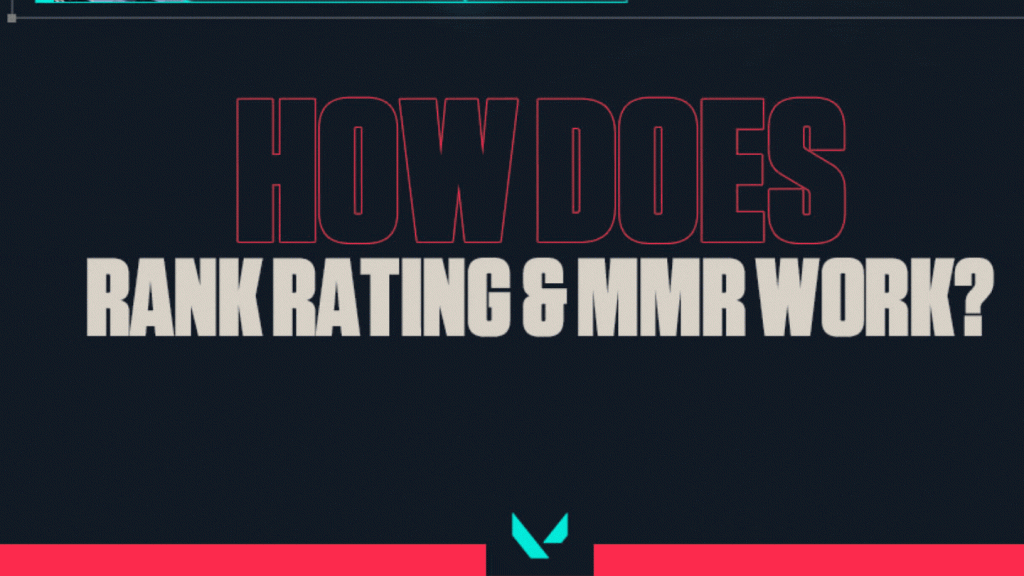
Here are all the Valorant ranks in order after Episode 5
The competitive mode for Valorant has received a bit of an upgrade in Episode 5. New players may benefit from this Valorant rank badge guide.
Valorant was initially released with 22 ranks spread across eight tiers. In episode five, Riot has slipped in the green Ascendent badge to the rank order to deliver some much-needed balance.
It’s not an earth-shaking update, but it could have a major impact on Valorant’s ranking system in the long term. If you’re a new player, this guide should help you understand Valorant ranks and their order.
What are all the Valorant ranks in order?

Valorant has nine competitive tiers. Each tier has three ranks, with the first being the lowest and the third being the highest. Radiant is the only rank not to have a sub-rank, as it’s the highest Valorant rank and only a select number of players can reach it. Top Radiant players in each region also get a leaderboard to flex their status.
Here are all the Valorant ranks in order
| Rank badge | Sub-ranks | RR threshold |
| Iron | Three | 100 |
| Bronze | Three | 100 |
| Silver | Three | 100 |
| Gold | Three | 100 |
| Platinum | Three | 100 |
| Diamond | Three | 100 |
| Ascendant | Three | 100 |
| Immortal | Three | Regional threshold |
| Radiant | None | Regional threshold Leaderboard |
Iron is the lowest of Valorant ranks, where most new players find themselves at the beginning of their FPS experience. Fortunately, Valorant’s system is designed to push players into the appropriate by using their Rank Rating or RR. So, if you think you’re better than Iron, it should be reflected in your RR gained per match.
What’s the difference between rank, RR, and MMR?
In Valorant, MMR is an assessment of a player’s skills while RR tracks a player’s progress climbing the ranked ladder.
Riot has devised different ways to measure skills in Valorant. Ranks are visible emblems that allocate players in common MMR groups. Players in similar MMR get queued against each other to maintain integrity and fairness. RR helps the system track progress and demotion based on performance on each map.
How does Rank Rating and MMR work?

Players may climb the tier ladder by acquiring 300 RR. If your MMR is higher than your rank, you’ll gain more RR on wins than losing on losses and vice versa. Once you hit Immortal, the RR system will shift to be more cutthroat and challenging.
When you make Ascendant, you’ll start with 10 RR. From there, you’ll keep earning RR indefinitely as long as the wins keep coming. To rise through Immortal 2 and beyond, you’ll need to reach certain regional RR thresholds.
It gets more complicated in Radiant. For example, if you’re one of the top 500 players in the NA region but have less than 350 RR (NA’s regional RR threshold for Radiant), you’ll still be in Immortal 3.
Simply put, reaching your regional RR threshold alone isn’t enough to prove yourself worthy of the Radiant rank. You must also be one of the top 500 players in your region. For example:
| Rank | RR in NA region |
| Immortal 3 | 200 |
| Radiant | 350 |
Prior to the fifth episode, leaderboards were crammed with players that simply played more, rather than the actual best. However, adding Ascendant will potentially balance this while still helping skilled players grind their way out of lower ranks.
Recommended

Andrew Tate criticized for defending toxicity in Valorant, demanding ban on female players
Andrew Tate is defending a toxic Valorant troll, and gaming community isn’t happy.

Latest Brimstone buff in Valorant patch 8.09 is too good
Brimstone will be great again.

Upcoming Valorant Night Market release date leaked
Start saving up!







